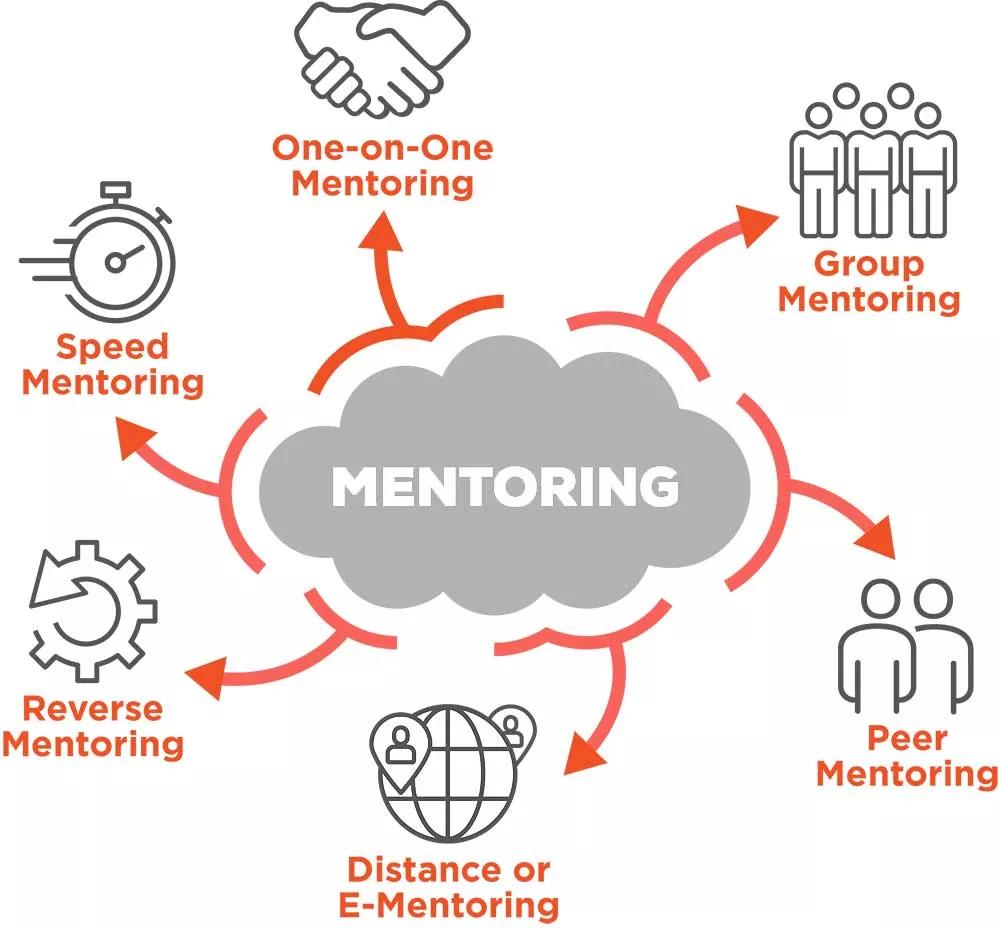What Is Mentoring?
Mentoring is a reciprocal and collaborative at-will relationship that most often occurs between a senior and junior employee for the purpose of the mentee’s growth, learning, and career development. Often the mentor and mentee are internal to an organization, and there is an emphasis on organizational goals, culture, career goals, advice on professional development, and work-life balance. Effective mentors often act as role models and sounding boards for their mentee and provide guidance to help them reach their goals.
Mentoring can be formal or informal. In an informal environment, mentees set goals, but they are usually not measurable and the relationships are unstructured. For a formal mentoring relationship, there are actionable and measurable goals defined and set with determined requirements.
Mentoring is not coaching and not counseling. Mentoring relationships are based upon advice giving and direction while coaching is not. Counseling is a paid-relationship in which underlying mental or psychological issues are addressed with solutions given by a medical professional.

Mentoring Techniques or Models
One-on-One Mentoring: This type of mentoring is the most traditional of all the types of mentoring. Only the mentor and mentee are involved in this type of mentoring, and it is usually a more-experienced individual paired with a less-experienced or much younger mentee.
Group Mentoring: In this model, one or several mentors work with a group of mentees. Schools and youth programs often apply this model because there may not be enough time or resources to have one mentor for each participant.
Peer Mentoring: Participants in this model are from the same role or department or have shared or similar experiences, whether in their professional or personal lives. These peers pair up to offer support for each other. This can be a group or a one-on-one mentoring relationship.
Distance or E-Mentoring: With such advanced technology, the mentorship relationship no longer has to be face-to-face. Using online software or even email, participants in this type of mentoring can connect virtually without losing the personal touch.
Reverse Mentoring: This mentoring relationship is flipped from the traditional model. Instead of a senior professional mentoring a more junior employee, the junior employee mentors a more senior professional. This relationship is usually for the younger or more junior professional to teach the skills or a new application or technology to the more senior one.
Speed Mentoring: This type of mentoring is a play on speed dating and usually occurs as part of a corporate event or conference. The mentee has a series of one-on-one conversations with a set of different mentors and usually moves from one mentor to the next after a brief meeting. The mentee should come prepared with questions for advice from the senior level professionals.
